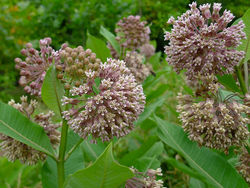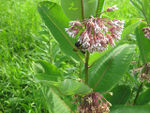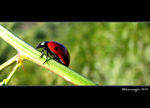| Milkweed |
|
|
| Scientific Classification |
|
|
| Species |
- A. pubescens
- A. pubigera
- A. ramosa
- A. apocinum
- A. capitellata
- A. cornuti
- A. elliptica
- A. exaltata
- A. fragrans
- A. globose
- A. grandifolia
- A. illineonsis
- A. intermedia
- A. kansana
- A. sericea
- A. syriaca f. inermis
- A. syriaca f. leucantha
- A. syriaca f. polyphylla
- A. syriaca var. kansana[2]
|
Milkweeds are any of the species of flowering plants belonging to the taxonomic genus Asclepius. They are perhaps best known for the species A. syriaca, which is an important food for butterflies like the Monarch and beautiful wildflower with pink to purplish blossums. They can be found in cropsides, roadsides, ditches and old roads. It is rare in the west coast, but is very popular in the east coast especially in the north east. Back in the second world war the Native Americans used milkweed as a source of fiber, and used their seed pods that were processed for the coma. Eating the milkweed though is not recommended. The milkweed is an interesting flower, and you will learn a lot about it.
Body Design
The milkweed is a tall plant with wide and long leaves as can be seen in the picture. The plant has 100 flowers per umbel, but usually on 30 flowers are on each stem. The stem has a variety of color from white to green to purple. The height of the plant is three to five feet but can reach up to 8 feet in length, the root of the plant is deep. [3]
There pods are 9cm in length. The flower is 2 inches cluster and the individual flowers are one and a half inches, the color consists of pink to a creamy color. The leaf is 8 inches in length and is 3 inches wide. The colors are white and pink.The body design of the milk weed allows them to like in climates have a lot of sunlight can survive 51 to 153cm in precipitation, and can survive a minimum of negative forty degree Celsius. The body design of the milkweed in unique to plants, and that's why its interesting to learn about. [4]
Life Cycle
The Milkweed goes through a long 3 year process to fully mature as a plant. The first year the milkweed build its light brown roots nice and strong. even though the plant is extremely small the butterfly can still find them, though when they eat it doesn't make them full. The second year the plant is able to produce a good amount of leaves. The butterfly can spot this plant from the air, and sometimes lay their eggs on the plant. On the third year milkweed is fully matured and developed they produce large amount of leaves is plenty food for the caterpillars, also they are a source of nectar for butterflies and bees. The Milkweed bloom mainly from may to august, and the 2 to 4 inches pods form in the fall. The life cycle of the milkweed is complex, but interesting.[5]
Ecology
The milkweed lives in various areas from woodlands to cleared grasslands and marshlands. It grows in clumps or patches in meadows, fence rows, roadsides, railways, waste places, reduced-tillage fields, and other open habitats. Milkweed lives in most state in the east coast and also in the Midwest. The states they aren't in are Washington, California, Nevada, Idaho and more. They milkweed predator is the ladybug who eats the aphid, which is seen on the ecology image. [6]
Environmental impact
The milkweed species Asclepias syriaca has a huge impact on the environment. Milkweed are a very aggressive and dangerous plant. It causes several poisonous glucosidic substances that and is known to poison sheep, cattle, horse. Some foods they affect are soybeans, corn and peanuts. Some milkweed are known as noxious weed. Also the milkweed helps its predators such as ladybugs, butterflies, bees, and other insects grow because of the amount of nectar the milkweed contains. Some other impacts are that they negatively impact animal health, negatively impact the agriculture, and has a broad native range.[6]
Video
Identifying Common Milkweed ....
References




